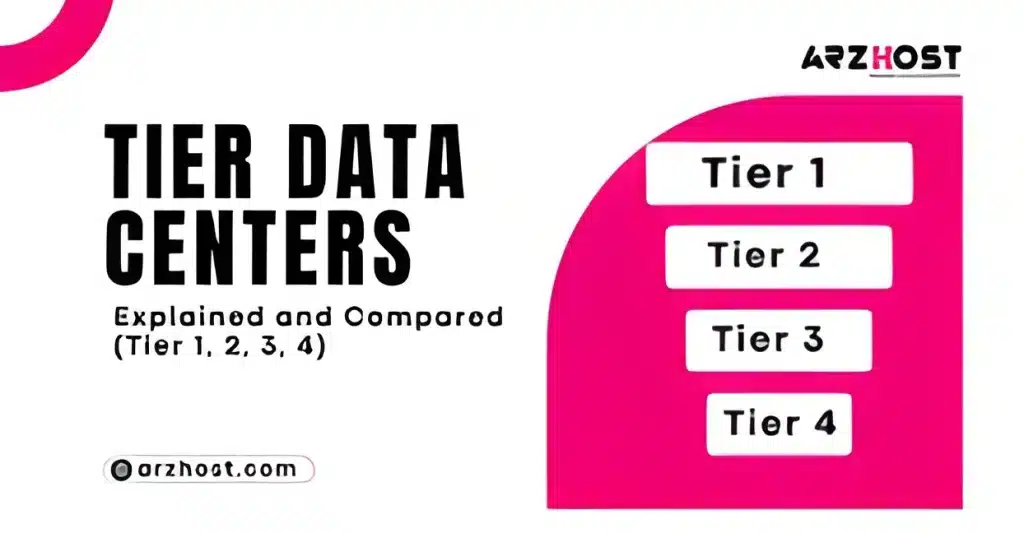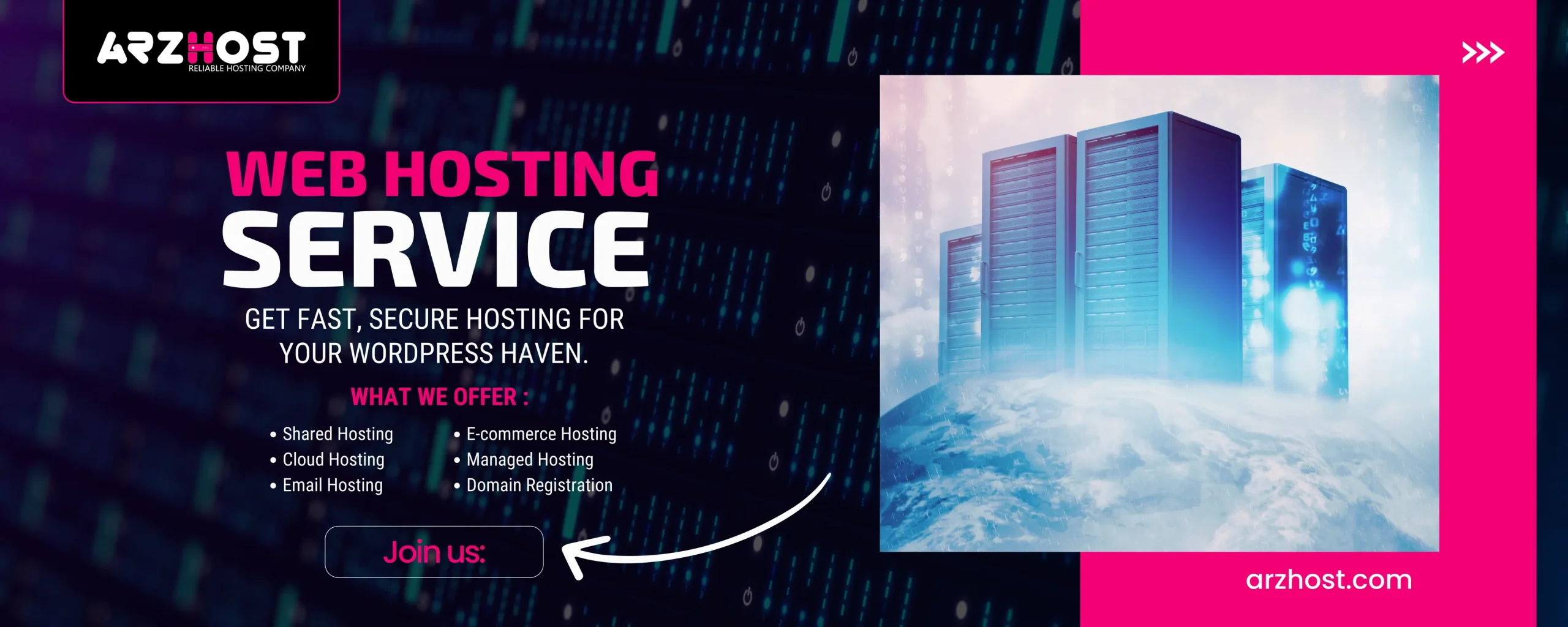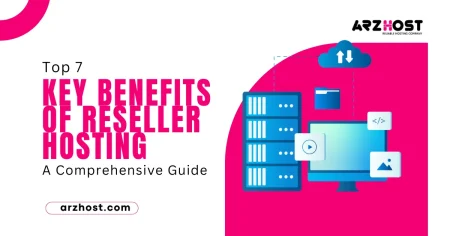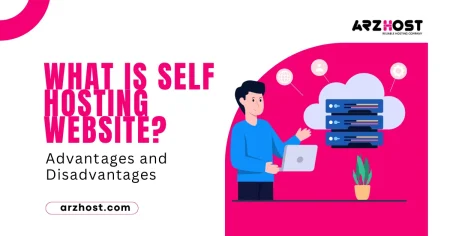The Uptime Institute’s tier ratings are essential if you work in the Tier data center industry, and if you need to become more familiar with them, your firm could be better.
For more than 20 years, their Tier Standards have worked on classifying data centers and separating the good ones from the bolstered excellent ones. But what exactly are Tier Data Center Standards, and why are they so important?
When selecting a facility to house your data, data center tiers are an important consideration. Failure to select the appropriate tier might result in issues with downtime or unforeseen costs because the tier rating exposes what a data center can offer in terms of reliability and performance.
At ARZ Host, we talk about how data center tiers operate and how you may evaluate a data center’s quality using these rankings.
Learn how to choose a facility that suits your business’s needs and budget by using the tiering criteria in the following segments.
What Are Tier Data Center?
Data center tiers are a recognized grading system that shows how reliable the infrastructure of a data center is. Facilities are ranked from 1 to 4, with 1 being the worst performance and 4 representing the greatest.
The Uptime Institute Tier categorization System is the most popular data center tier categorization scheme. The Uptime Institute, a non-profit group that develops standards for data center design, construction, and operation, created this system.

The Uptime Institute, an impartial organization that assesses the facility level largely using the following criteria, awards a data center with this global ranking:
- Consistent availability.
- Fault tolerance, or the capacity to deal with both planned and unforeseen disturbances.
- Service price.
This objective tier system provides a factual picture of how a particular data center function. Although it is optional to have a rating, not all data centers have a tier assigned to them.
However, the majority of large facilities opt to request a report from the Uptime Institute because:
- Increase the credibility of your services.
- Promote the facility’s capabilities.
- Boost trust to draw in new customers.
- Make plans for facility expansions and renovations.
For an official rating, data center employees must present site plans and blueprints (Tier Certification of Design Documents) to the Uptime Institute. The Uptime Institute representatives then go to the facility in person to go over operations and give a rating.
Tier 1 data centers are the least reliable, with an annual uptime estimate of only 99.671%. Accordingly, Tier 1 data centers may have annual downtime of up to 28.8 hours. A single path for electricity and cooling is typical in Tier 1 data centers, and there are rarely any redundant parts.
With an expected uptime of 99.741% annually, Tier 2 data centers are more reliable than Tier 1 data centers. Accordingly, Tier 2 data centers may have annual downtime of up to 22 hours.
Tier 2 data centers frequently only have one path for power and cooling, although they may also feature redundant parts like backup generators and UPS systems.
Tier 3 data centers are highly reliable, with an annual uptime expectation of 99.982%. Accordingly, Tier 3 data centers may have annual downtime of up to 1.6 hours.
In Tier 3 data centers, all key systems often include redundant parts and several channels for power and cooling. This enables Tier 3 data centers to maintain and repair crucial systems without interfering with user service.
Tier 4 data centers are the most dependable, with an annual uptime expectation of 99.995%. Accordingly, Tier 4 data centers may have annual downtime of up to 26.3 minutes.
Tier 4 data centers are built with redundant components for every important system and are entirely fault-tolerant. Due to this, Tier 4 data centers can endure even the worst outages without affecting user service.
The particular requirements of the organization will determine which data center tier to use. A Tier 3 or Tier 4 data center is the best option for companies that need the highest level of reliability.
A Tier 1 or Tier 2 data center is an option for companies that can tolerate downtime better.
It is important to remember that the Uptime Institute Tier Classification System is not a requirement that must be met. Data center providers are not obligated to get Uptime Institute certification for their facilities.
To show their dedication to dependability, many data center providers opt to certify their data centers.
When selecting a data center, it’s essential to check the uptime promises and enquire about the provider’s tier classification. It’s important to comprehend your company’s unique requirements and pick a data center that can match them.
What Factors Are Considered for Data Center Tier Classification?
The infrastructure of a data center’s tiers is categorized according to their availability and redundancy using this system. The categorization system, also known as the Uptime Institute’s tier standard, aids businesses in evaluating a data center’s dependability and resilience in order to reduce downtime.

Four tiers are commonly used to categorize classifications: Tier I, Tier II, Tier III, and Tier IV.
Although the precise classification process is kept a secret by the Uptime Institute, the majority of important indicators are available to the general public. When rating a facility, the Institute takes into account the following factors:
- Guaranteed uptime and service availability.
- Levels of redundancy (the act of copying essential parts and storing them as backups and fail-safes in the event of planned or unexpected disturbances).
- infrastructure for cooling and power.
- Knowledgeable staff and maintenance procedures (especially the capacity to handle concurrent maintainability).
- Service price.
- A center’s capacity for long-term business objectives and operational sustainability.
- How long it takes a facility to establish a new customer?
- Tiers of data center security.
- Carrier freedom.
It’s important to keep in mind that reaching a higher tier classification usually involves a bigger investment in operational expenses and infrastructure.
When choosing the right tier for their data center, organizations should carefully take into account their unique needs and financial limitations.
There are various regional and sector-specific standards in addition to the tier categorization used by the Uptime Institute.
How to Understand Data Center Tier Ratings?
Data center tier ratings are a defined approach for categorizing data centers according to their dependability, redundancy, and fault tolerance. An independent company that specializes in data center infrastructure, the Uptime Institute, defines the ratings.
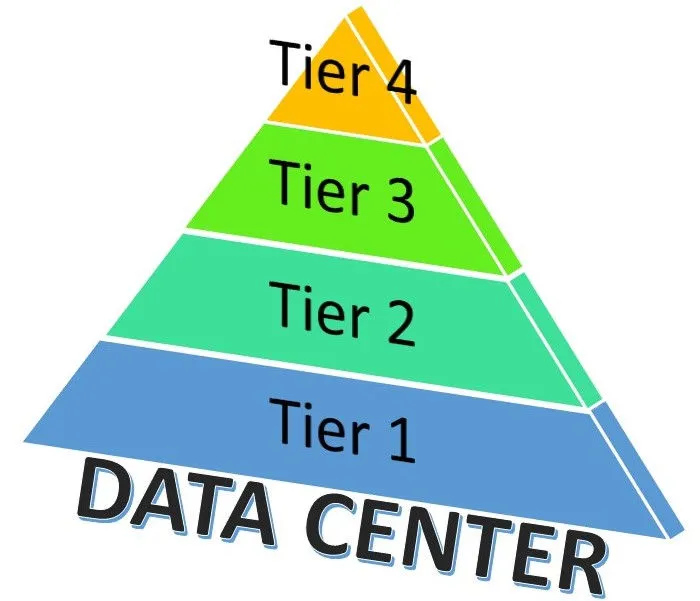
There are four tiers of data centers:
- Tier I: Basic data center with minimal redundancy and fault tolerance. Offers 99.671% uptime, with up to 28.8 hours of downtime per year.
- Tier II: Redundant data center with some fault tolerance. Offers 99.741% uptime, with up to 22.7 hours of downtime per year.
- Tier III: Concurrently maintainable data center with high fault tolerance. Offers 99.982% uptime, with up to 1.6 hours of downtime per year.
- Tier IV: Fault-tolerant data center with the highest level of reliability. Offers 99.995% uptime, with up to 0.4 hours of downtime per year.
The four levels of data centers are progressive. Each level contains the requirements of the lower ranks, and data centers can move up and down the ratings.
Tier 4 data centers are not necessarily a better choice than those with lower ratings, even though reliability increases with higher levels.
Tiers 3 or 4 (the priciest solutions), which match distinct business needs, frequently represent an overinvestment.
The data center is more dependable and redundant the higher the tier grade. This suggests that downtime is least likely to occur in Tier IV data centers and most likely in Tier I data centers.
| PARAMETERS | TIER 1 | TIER 2 | TIER 3 | TIER 4 |
| Uptime guarantee | 99.671% | 99.741% | 99.982% | 99.995% |
| Downtime per year | <28.8 hours | <22 hours | <1.6 hours | <26.3 minutes |
| Component redundancy | None | Partial power and cooling redundancy (partial N+1) | Full N+1 | Fault tolerant (2N or 2N+1) |
| Concurrently maintainable | No | No | Partially | Yes |
| Price | $ | $$ | $$$ | $$$$ |
| Compartmentalization | No | No | No | Yes |
| Staffing | None | 1 shift | 1+ shift | 24/7/365 |
| Typical customer | Small companies and start-ups with simple requirements | SMBs | Growing and large businesses | Government entities and large enterprises |
| The main reason why companies select this tier | The most affordable data Center tier | A good cost-to-performance ratio | A fine line between high performance and affordability | A fault-tolerant facility ideal for consistently high levels of traffic or processing demands |
Tier 1 Data Center
The most basic kind of data center is a Tier 1 one, which just has one path for cooling and power and has no redundant or backup parts.
This implies that the entire data center will shut down if any essential component fails. Tier 1 data centers are frequently utilized for less important applications, like testing and development settings.
The following are some of the essential qualities of a Tier 1 data center:
- Single path for power and cooling
- No redundant or backup components
- Expected uptime of 99.671% (28.8 hours of downtime annually)
- Typically used for less critical applications
Although Tier 1 data centers are the least expensive to build and run, they also provide the least availability and redundancy.
Systems, procedures, and tools that guarantee the data center is operational outside of regular business hours (nights and weekends) are also necessary for Tier 1 data centers.
Tier 1 data center customers might anticipate up to 28.8 hours of downtime year due to a lack of backups.
You should thoroughly analyze your demands and requirements if you’re thinking about using a Tier 1 data center.
Consider a Tier 2, Tier 3, or Tier 4 data center instead if you require a highly available and dependable data center for your critical applications.
Tier 2 Data Center
A Tier 2 data center is one that provides a high level of availability and dependability but does not have as much redundancy as a Tier 3 data center.
Tier 2 data centers do feature some redundant and backup components, but often only one path for power and cooling. As a result, even if one component doesn’t work, the data center may continue to function without it thanks to the remaining components.
Businesses that require a dependable and cost-effective data center solution may choose Tier 2 data centers. They are also a fantastic choice for companies that host non-mission-critical data or applications.
A Tier 2 data center has the following essential characteristics:
- Uptime: Tier 2 data centers have an anticipated uptime of 99.741%, which translates to an annual downtime of 22 hours on average.
- Redundancy: Power generators and cooling units are examples of redundant and backup systems found in Tier 2 data centers. This implies that in the event of a component failure, the remaining components will take over and keep the data center operational.
- Security: Physical security, video surveillance, and access control are just a few of the security features that Tier 2 data centers have in place to safeguard your data.
A tier 2 data center has all the functionality of a tier 1 data center but with more backup choices. The following features of these data centers improve their resistance to disruptions:
- Extra engine generators.
- Energy storage.
- Chillers.
- Raised floors.
- UPS modules.
- Pumps.
- Heat rejection equipment.
- Fuel tanks and cells.
- Extra cooling units.
It’s important to carefully assess the provider’s offerings and reputation if you’re thinking about selecting a Tier 2 data center. Additionally, you should confirm that the data center offers the features and security measures you require.
Tier 3 Data Center
A Tier 3 data center is a concurrently maintainable structure with redundant power and cooling distribution lines. A Tier 3 facility does not require a complete shutdown for maintenance or equipment replacement, in opposition to Tier 1 and Tier 2 data centers.
Tier 3 data centers are intended to have an uptime of 99.982%, which translates to a maximum annual downtime of 1.6 hours.
This level of dependability is suited for mission-critical business operations where any small disruption can result in significant losses in terms of money and reputation.
Important characteristics of Tier 3 data centers include:
- Redundant power and cooling systems: Tier 3 data centers contain a minimum of two separate power and cooling systems, each of which is equipped to handle the entire data center’s load. This guarantees continuous service since in the event of a failure in one system, the other system will immediately take over.
- Concurrent maintainability: Any essential system can have maintenance and repairs made without affecting other systems because Tier 3 data centers are built to support this. Combining redundant systems, isolation mechanisms, and hot-swappable components allows for this.
- High availability: Even when there are many failures, Tier 3 data centers are built to minimize downtime. This is accomplished by combining redundant systems, several data traffic routes, and load-balancing strategies.
A tier 3 data center is a concurrently maintainable structure with numerous power and cooling distribution channels.
A tier 3 facility does not require a complete shutdown for maintenance or equipment replacement, in opposition to tier 1 and tier 2 data centers.
All the elements present in a tier 2 data center must be present in a tier 3 facility, but N+1 availability is also required:
- “N” indicates the amount of space required to accommodate the entire IT load.
- “+1” means the addition of a second component for backup.
In the event that the main part fails or is removed by staff members for regular upkeep, N+1 redundancy ensures that an extra component will begin to function.
Additionally, Tier 3 data centers need a backup option that can maintain operations in the event of a local or nearby electricity outage. The establishment must guarantee that equipment can function for at least 72 hours after an outage.
Comparing Tier 3 installations to lesser classifications, there is a considerable increase in availability. Up to 1.6 hours of downtime per year are experienced by clients who depend on tier 3 data centers.
Large businesses and organizations that demand the highest levels of dependability and uptime for their essential business systems frequently use Tier 3 data centers.
They are also employed by cloud service providers and other businesses that must guarantee that their clients can always access their services.
Here are a few examples of companies and groups that might profit from utilizing a Tier 3 data center:
- Financial institutions
- Healthcare providers
- Government agencies
- E-commerce companies
- Cloud providers
- Telecommunications companies
- Media and entertainment companies
- Online gaming companies
- Any business that relies on its IT systems to operate 24/7
If you’re thinking about employing a Tier 3 data center, make sure that you carefully evaluate your company’s requirements and select a provider with a track record of dependability and uptime.
Tier 4 Data Center
With an expected uptime of 99.995%, Tier 4 data centers are the most dependable. It suggests that a maximum of 26.3 minutes of downtime should occur every year.
Businesses that depend on the availability of their vital systems around-the-clock, such as financial institutions, healthcare providers, and government agencies, frequently install Tier 4 data centers.
The high uptime of Tier 4 data centers is achieved via a variety of techniques, such as:
- Dependability: Tier 4 data centers include redundant parts for all essential systems, such as networking, cooling, and electricity. This indicates that there won’t be any downtime if one component fails and is replaced by another.
- Tolerance for faults: Tier 4 data centers are built to be fault tolerant, which means they can keep working even if one component breaks. Features like dual power routes, redundant cooling loops, and hot-swappable components help to achieve this.
- Physical security: To protect against unwanted entry, theft, and crime, Tier 4 data centers have strong physical security measures in place. This consists of elements like biometric access control, security cameras, and perimeter fencing.
The list of requirements for tier 3 is expanded by fault tolerance techniques in tier 4 data centers. Multiple physically isolated systems that serve as redundant parts and distribution pathways are present in these data centers.
In addition to meeting all tier 3 requirements, a tier 4 facility must guarantee:
- The support for all components includes two generators, two UPS systems, and two cooling systems.
- Each distribution path is separate, preventing other components from being negatively impacted by a single failure in one.
- After a local or regional power outage, operations continue for a minimum of 96 hours.
- No external source is connected to the power source.
For a tier 4 data center, the separation between redundant components is important. A local event cannot compromise both systems due to the physical isolation between them.
Tier 4 data centers have 2N or 2N+1 redundancy:
- The facility has a fully mirrored, independent system on standby, which is known as 2N redundancy (or N+N). An identical backup replica begins to run to ensure continuous operations in the event that something were to happen to a primary component.
- In case a failure occurs when a secondary system is in use, the 2N+1 model offers twice the operational capacity (2N) and an extra backup component (+1).
Client downtime should not exceed 26.3 minutes per year with a level 4 facility. Tier 4 service level agreements (SLAs) do not ensure 100% availability because there is a small possibility that a component could experience a problem while being maintained alongside its redundant counterparts.
The most expensive sort of data center to construct and run is a Tier 4 facility. However, they provide the highest level of availability and dependability, making them the best option for companies whose vital systems must be accessible round-the-clock.
Tier 4 data centers include the following:
- Google Cloud Platform Data Centers
- Amazon Web Services Data Centers
- Microsoft Azure Data Centers
- Equinix Data Centers
- Digital Realty Data Centers
These data centers may be found all over the world and offer hosting services to a variety of companies, including both big corporations and small startups.
Do your research and pick a provider with a solid reputation and a proven track record of dependability if you are thinking about selecting a Tier 4 data center.
Additionally, you should confirm that the data center has the capabilities and services you require and is situated in an area that meets your demands.
Which Data Center Tier Is Best for You?
Choosing tier 3 or 4 is not always the best option, even though higher tiers provide a more dependable service. Decision-makers should select the data center tier that best suits their company’s needs.

Companies of a kind tend to favor a particular tier. Here is a brief overview of each data center tier:
- Tier I: The most basic type of data center is called a Tier I data center. There is no redundancy and only one power and cooling system. Compared to other tiers, Tier I data centers are often less expensive, but they are also the least reliable.
- Tier II: Tier II data centers contain multiple cooling and power systems, for example. In the event that one of the systems fails, there is still a chance of downtime. Businesses that need some redundancy but are on a tight budget can consider Tier II data centers.
- Tier III: Power and cooling systems in Tier III data centers are completely redundant. This indicates that there are no scheduled times for maintenance, and unexpected disruptions are extremely uncommon. Businesses that require high availability and reliability may consider Tier III data centers.
- Tier IV: The most dependable kind of data center is Tier IV. They have a network, cooling, and power systems that are completely redundant. Data centers in Tier IV are built to withstand a single failure without any downtime. Although Tier IV data centers are the most expensive, they are also the most dependable.
Cost and uptime are typically the two most important factors when selecting a tier. Spending money on a level 3 data center when a less expensive facility will do the trick is a waste.
It can also have an effect on your revenue, productivity, customer happiness, and reputation to set up at a tier 2 facility when you need higher uptime.
Conclusion
The increasing demand for availability is one of the factors that motivate businesses to use external data centers.
Because of the uptime and performance provided by these facilities, you may grow your company without concern that a system malfunction or unexpected event will undermine your progress.
The Tier Classification System can offer advice on the data center tier level that can best balance your risk tolerance and budget as you consider your reliability requirements.
Tier | Uptime per year | Downtime per year | Redundancy | Cost | Traditional Customer |
| Tier I Basic Capacity | 99.671% | <28.8 hours | – None | $ | – Small businesses – Start-ups – Businesses with simple requirements |
| Tier II Redundant Capacity Components | 99.741% | <22 hours | – Partial power and cooling redundancy | $$ | – SMB |
| Tier III Concurrently Maintainable” | 99.982% | <1.6 hours | – N+1 fault tolerance | $$$ | – Growing businesses – Large businesses |
| Tier IV Fault Tolerant” | 99.995% | <26.3 minutes | – 2N or 2N+1 – fully fault-tolerant | $$$$ | – Government entities – Large enterprises – Businesses with an international reach |
Data centers can be classified using data center tiers according to their degree of redundancy and uptime availability.
The simplest data centers are Tier I ones, with only one path for cooling and power and no redundancy for essential parts.
Tier II data centers contain some redundancy, but if an essential component fails, they could still go offline. Concurrent maintenance is possible in Tier III data centers, providing for the uptime of important components to be maintained without affecting other operations.
With total fault tolerance and the capacity to survive several failures without affecting uptime, Tier IV data centers are the most complex.
It’s important to take your company’s needs into account when selecting a data center tier. You must pick a Tier III or Tier IV data center if your applications are mission-critical and need the greatest levels of uptime and dependability.
However, you might be able to save money by selecting a lower-tier data center if you have less important applications or have the ability to put up with some downtime.
FAQS (Frequently Asked Questions)
Q#1: What are Tier data centers?
Data centers are divided into different tiers according to their dependability and availability. The Uptime Institute, a nonprofit organization that specializes in data center management and design, created the classification system.
With Tier 1 being the least trustworthy and Tier 4 being the most reliable, there are a total of four Tier levels. While Tier 4 data centers are often used for mission-critical applications that demand the highest levels of availability and reliability, Tier 1 data centers are typically utilized for non-critical applications.
Q#2: What are the key differences between the different Tier levels?
The key differences between the different Tier levels are the following:
- Tier 1: Tier 1 data centers are made to be operational 99.671% of the time and provide a basic level of redundancy. Accordingly, they may encounter up to 28.8 hours of downtime yearly.
- Tier 2: Tier 2 data centers have more redundancy than Tier 1 data centers and are designed to be operational 99.749% of the time. This means that they can experience up to 22.0 hours of downtime per year.
- Tier 3: The concurrent maintainability of Tier 3 data centers means that maintenance can be carried out on important parts without putting the data center offline. Tier 3 data centers can encounter up to 1.6 hours of outage annually, with an expected uptime of 99.982% each year.
- Tier 4: Tier 4 data centers are built to be fault tolerant, which means they can keep working even if a vital component breaks down. Tier 4 data centers can incur up to 0.4 hours of downtime annually although having a projected uptime of 99.995% per year.
Q#3: What are the benefits of using a Tier data center?
There are several benefits to using a Tier data center, including:
- Reliability: Tier data centers are designed to be highly reliable, with minimal downtime. This is important for businesses that rely on their data centers to operate 24/7.
- Security: Tier data centers typically have robust security measures in place to protect customer data. This is important for businesses that handle sensitive data, such as financial or healthcare data.
- Compliance: Tier data centers can help businesses comply with industry regulations that require high levels of data reliability and security.
Q#4: What are the costs of using a Tier data center?
Utilizing Tier data centers often costs more than using non-Tier data centers. This is so that additional infrastructure and redundancy may be invested in them. But for companies that depend on their data centers to run constantly and/or handle sensitive data, the advantages of utilizing a Tier data center frequently exceed the expenses.
Q#5: What factors should I consider when choosing a Tier data center?
When choosing a Tier data center, there are several factors to consider, including:
- Tier level: The Tier level of the data center should be appropriate for your business needs. If you rely on your data center to operate 24/7 and/or handle sensitive data, you will need a Tier 3 or Tier 4 data center.
- Location: The location of the data center is important for factors such as disaster recovery and network performance.
- Security: The data center should have robust security measures in place to protect your data.
- Compliance: The data center should be able to help you comply with any industry regulations that apply to your business.
Q#6: How can I find a Tier data center?
There are a number of ways to find a Tier data center. You can search online directories, such as the Uptime Institute’s Data Center Tier Certification Directory, or you can contact data center providers directly.
Tier data centers are an important part of the modern business landscape. By providing reliable and secure environments for businesses to store and process their data, Tier data centers help businesses to operate more efficiently and effectively.
Finding a Tier data center can be done in a variety of methods. Data center providers can be contacted directly or you may use internet directories like the Uptime Institute’s Data Center Tier Certification Directory.
Tier data centers play a significant role in the modern business climate. Tier data centers help businesses run more effectively and efficiently by offering dependable and secure locations for enterprises to store and handle their data.
It is vital to take into account the particular requirements of your company while selecting a Tier data center. A Tier 3 or Tier 4 data center is required if you depend on it to run continuously and/or handle sensitive data.




